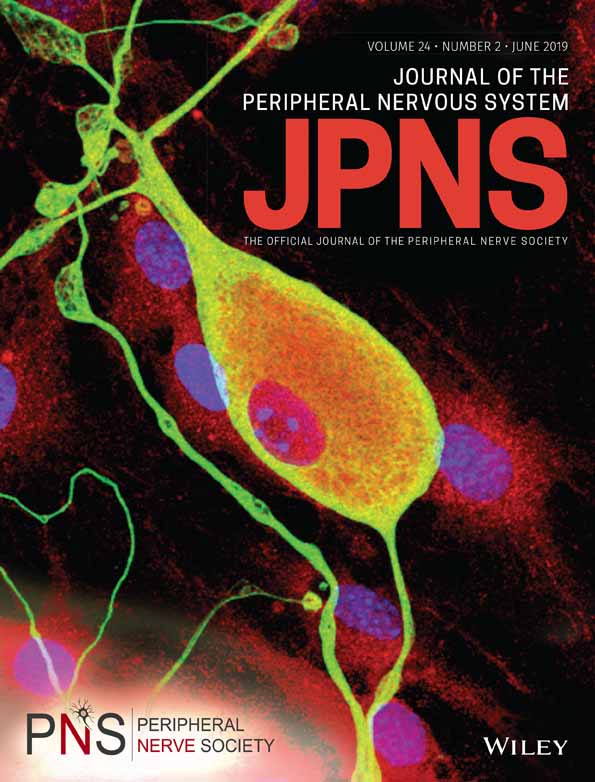Diagnosis and treatment response in the asymmetric variant of chronic inflammatory demyelinating polyneuropathy
Abstract
The objectives were to (a) assess the diagnostic value of testing clinically affected and unaffected limbs with nerve conduction studies (NCS) in patients with the asymmetric chronic inflammatory demyelinating polyradiculoneuropathy (CIDP) variant and to define the most useful strategy for diagnosis, and (b) describe treatment response and long-term outcome. We performed a retrospective study and included patients with a multifocal distribution of symptoms and signs, who met the probable or definite EFNS/PNS diagnostic categories for CIDP. We included 34 patients and 32 NCS datasets were available. Of these 32 patients, 25 (78%) met the electrodiagnostic criteria for definite or probable CIDP and seven (22%) for possible CIDP. Patients fulfilling the possible electrodiagnostic criteria and a supportive criterion were considered as probable CIDP. NCS of the clinically affected forearm and leg led to a probable or definite diagnosis in 13 patients (41%). Measuring both arms up to Erb's point led to a probable or definite diagnosis in 25 patients (78%), after which NCS of both legs did not contribute to additional probable or definite diagnoses. In total, 30% of patients treated with dexamethasone and 94% of patients treated with intravenous immunoglobulins (IVIg) responded. IVIg withdrawal attempts were successful in 21% of patients. After measuring the clinically affected arm up to Erb's point, NCS of the unaffected arm to Erb's point has the highest additional diagnostic yield in patients with asymmetric CIDP. Patients seem to respond better to IVIg than to corticosteroids and long-term treatment is often required, although IVIg withdrawal was successful in 21%.




